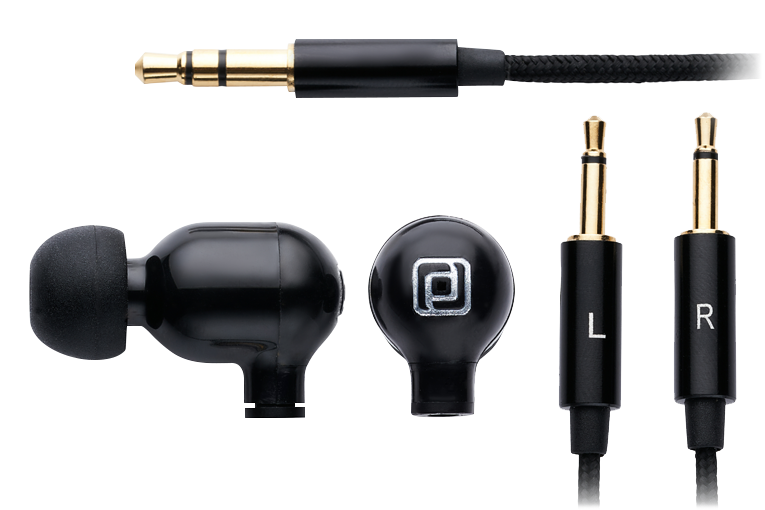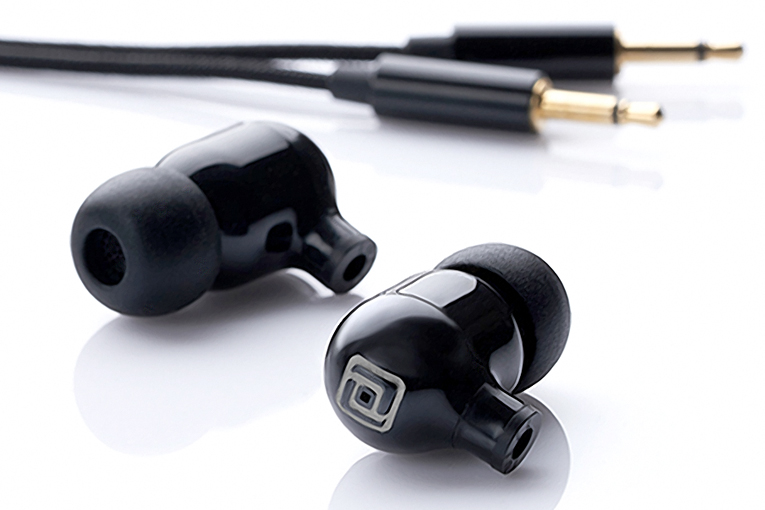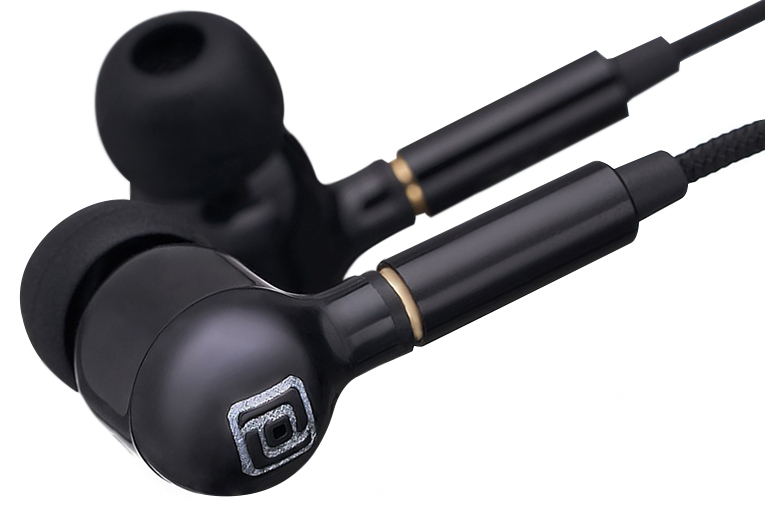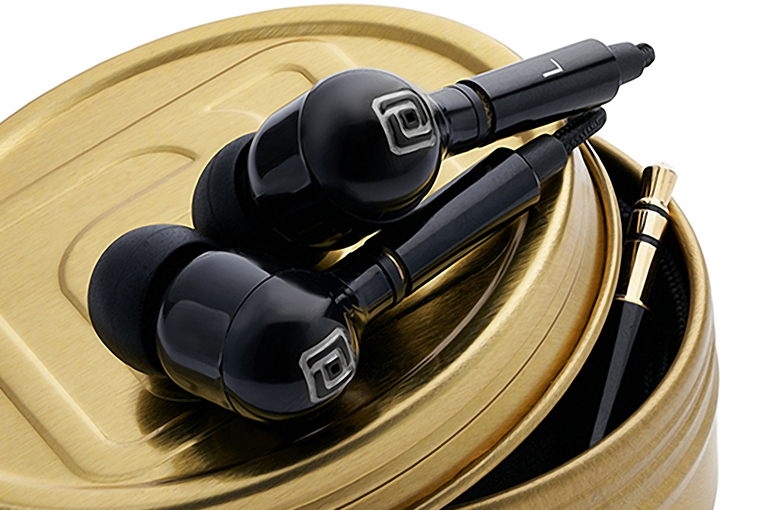Sound: 









Value: 









(Read about our ratings)
Measurements can be found by clicking this link.
Periodic Audio makes one of the most unusual lines of earphones in the audio biz. They all look basically the same; what distinguishes them—and provides the names for the products—is the material used in the diaphragms of the dynamic drivers. The company just released the third version of its earphone line, keeping the designations and the basic concepts, but employing a new material for the enclosure of the Mgv3 earphones ($199, all prices USD) and the other models in its line.
The material, manufactured by Eastman Chemical, is called Tritan. It’s a copolymer (i.e., plastic) commonly used for medical products and revered for its ruggedness and resistance to damage from chemical exposure—but Periodic Audio says the main reason it chose Tritan was to reduce distortion in the earphones.

Also unique to this line of earphones are the ways the detachable cables connect. Periodic Audio was unsatisfied with the micro-connectors currently on the market, so it developed what it calls the IDEEL connector: a super-compact 2.5mm phono jack that fits into an earphone. The cables are tipped with 2.5mm plugs. One thing I think is nice about these is that the cables detach easily, so if you accidentally snag a cable on something, the plug should pop out without much drama rather than exerting a painful tug on your ear.
The driver itself is built like a little speaker, with a magnesium diaphragm mounted in a tiny stainless-steel frame and attached using a flexible polymer surround. The earphones are rated at 101dB sensitivity with a 1mW signal and 32 ohms impedance, so they shouldn’t be tough for any source device to drive.

Incidentally, Periodic Audio sent some other earphones—just the earphones, no cables or tips—from the new line for me to check out. These include the Tiv3 ($299), Bev3 ($399), and Cv3 ($499) models, which are basically the same as the Mgv3s but use titanium, beryllium, and carbon diaphragms, respectively. I may do a review of one of these at a later date, but for now, I’ll include their frequency responses in the measurements section, available from the link at the top of this page, to give you a peek at how these models compare.
In the box
In addition to the earphones, there’s a 3.9′ (1.2m) cable with a 1/8″ (3.5mm) stereo plug on the source end. There’s also a small metal case with a top that threads onto the bottom, a 1/4″ (6.3mm)-to-1/8″ adapter, a dual-mono airplane adapter, and two plastic ear hooks that can be popped onto the cables for over-ear cable routing. Best, though, is the huge selection of tips: single- and double-flange silicone tips in three sizes each, all Periodic Audio’s own design, plus foam tips in three sizes. This selection should ensure that practically anyone can get a secure, comfortable fit.

Use
The largest of the single-flange tips fit my ears very comfortably—no surprise, considering that for the last couple of years, I have been keeping a supply of these same tips on hand to use with other earphones I review.
The Mgv3s were easy to drive straight out of the headphone jack on my Samsung Galaxy S10 phone. I used that for much of my listening, but substituted an AudioQuest DragonFly Cobalt DAC-headphone amp some of the time.
Sound
After a walk to the grocery store, and flipping through some favorite albums, I got the impression that the Mgv3s are generally neutral, with two minor exceptions: they were a bit bassy with some of the music I listened to, and maybe the treble was just a hair on the mellow side. If you’d like to see how accurate my guesses are, check out the measurements section, available from the link at the top of this review. I reread my review of the previous version of the top-of-the-line offering, the Periodic Audio Carbon earphones, and saw similar comments. Perhaps a common vibe in the line?
To confirm this impression, I put on the Holly Cole Trio’s version of “I Can See Clearly Now” (Don’t Smoke in Bed, 16-bit/44.1kHz FLAC, Blue Note / Qobuz). Yep, the double bass did sound a little elevated, but only subtly so—maybe 2dB above what I might normally expect. And that’s OK—it gave the tune a little more kick without obscuring the voice. The overall presentation seemed pretty close to neutral. The treble was a little mellow in ways, most notably on the piano, but I also noted that the response seemed slightly elevated somewhere, maybe in the mid-treble band between 5 and 10kHz. This didn’t make the earphones sound bright; I’d describe the sound as more dry and direct—which, now that I think of it, might indicate a lack of resonance. That’s not normally much of an issue with earphones, but I was definitely hearing something a little different, and kind of cleaner, in a way.

I just happened to be going back to the Beatles’ Sgt. Pepper’s Lonely Hearts Club Band (24/96kHz FLAC, UMC/Qobuz), inspired by music historian Andrew Hickey’s fascinating nearly four-hour podcast focusing on the band’s middle period. And clean is the adjective that again came to mind when I listened to “With a Little Help From My Friends.” The dense backing vocals, the hyper-melodic bassline, and the layered guitar and piano parts were all extremely clear and uncolored. Once again, I guessed that a certain range of the treble was just a hair elevated, which seemed to clarify the music without making it sound glaring. Nice!
I did have to wonder, though—the bass on “With a Little Help From My Friends” didn’t seem elevated at all, and maybe it even sounded a tad thin. To sort it all out, I had to put on my best bass reference: “Buddy’s Bounce,” from my album Take2 with saxophonist Ron Cyger (16/44.1 FLAC, Outrageous8/Qobuz). I played double bass on the tune and also mixed it, so I know what it’s supposed to sound like—and the Mgv3s sounded dead-on-target to me, with a tight, powerful, but in no way exaggerated bottom end. On top of that, the clarity throughout the audio range reminded me of what I heard through my JBL 305P MkII monitors as I labored for several nights over the mix. I surprised myself by thinking, “This is how I’d like people to hear this thing,” because in general, like most musicians, I don’t care how people listen to my music. As far as I’m concerned, they can rip it to a 128kbps MP3 file, record that onto an old Carpenters 8-track tape, and pipe it through a bullhorn . . . as long as they listen to it on something.
But then just out of curiosity, I listened to the fourth track, “Noir,” and the bass did sound like it’d been kicked up about 2 or 3dB. It still sounded good, though, and it gave the tune a little more groove than I’d expected. So I’m thinking there’s a little extra oomph in a fairly narrow range of upper bass, maybe between about 80 and 160Hz.

Normally, I might want to go to some classical recordings at this point, but I was really starting to enjoy these earphones, and I just wanted more of that good feeling, so I put on one of my all-time-favorite artistic creations: Deep Purple’s “Highway Star” (Machine Head, 24/96 FLAC, Rhino Warners / Qobuz). What I heard was one of the clearest renditions of this tune that I’ve ever experienced. Without the slightest effort, I was able to follow all three guitar parts during the solo—and honestly, I hadn’t previously noticed there were three guitar parts—or how loosely Ritchie Blackmore played the accompanying rhythm part in the left channel. Once again, all the parts sounded perfectly, effortlessly clear, without any exaggeration of any frequency band. I also got a clearer perspective on the album’s intimate ambience; famously, it was recorded in a shuttered hotel with, as explained in “Smoke On the Water,” “a few old beds” as the only acoustic treatment. I kept on listening to the whole album—something I don’t normally do, as I usually just listen to “Highway Star” and “Smoke on the Water” over and over again—because the Mgv3s gave me a fresh and compelling perspective on all the tunes.
Comparison
As I’m still sorting out all my stuff after a recent move, I had only a couple of rather disparate designs I could compare with the Mgv3s: the TinHiFi T3 Plus ($79.99) and the Campfire Audio Holocene earphones ($649).
I know I keep trotting out Patricia Barber’s Clique (24/176.4 FLAC, Impex/Qobuz) in these tests, but that’s because it works. On my favorite cut, “Trouble Is a Man,” I once again heard that extra bass oomph that came up unpredictably in my listening. In fact, I couldn’t help noticing the earphone bodies vibrating in my ear canals like little massage beds. (Not a bad sensation, I must say.) In this case, it was a bit oppressive—this is a singer’s album, after all—but still, I heard plenty of definition in the bass, and it did nothing to obscure the clarity of Barber’s voice and the cymbals.
In comparison, the T3 Pluses sounded flatter and more balanced—but they added a little bit of edge and congestion to Barber’s voice, and despite the fact that the bass was dialed back a few dB, the cymbals didn’t sound as clear. Much as I love the T3 Pluses, especially considering the price, I preferred the Mgv3s overall, especially because it would have been easy for me to bring the bass down one notch on my phone’s EQ to flatten out the Mgv3s’ response.
The Holocenes also sounded more balanced than the Mgv3s; their balance of bass to mids to treble was comparable to that of the T3 Pluses. They brought out a little more detail in the percussion and also gave me a bigger sense of space. However, Barber’s voice sounded a little softer than with the Mgv3s, and thus a bit less detailed.
Conclusion
The Mgv3s are very well-made, very good-sounding earphones. They do get a bit overenthusiastic in the bottom end at times, but the outstanding clarity in the mids and lower treble easily outweighs that—and on a lot of material, that extra little bit of bass seems to work quite well.
. . . Brent Butterworth
Associated Equipment
- Smartphone: Samsung Galaxy S10.
- DAC-headphone amplifier: AudioQuest DragonFly Cobalt.
Periodic Audio Mgv3 Earphones
Price: $199.
Warranty: Five years parts and labor.
Periodic Audio
4882 McGrath St., Ste. 100
Ventura, CA 93003
Phone: (855) 724-4367 or (307) 683-4151
Website: www.periodicaudio.com





